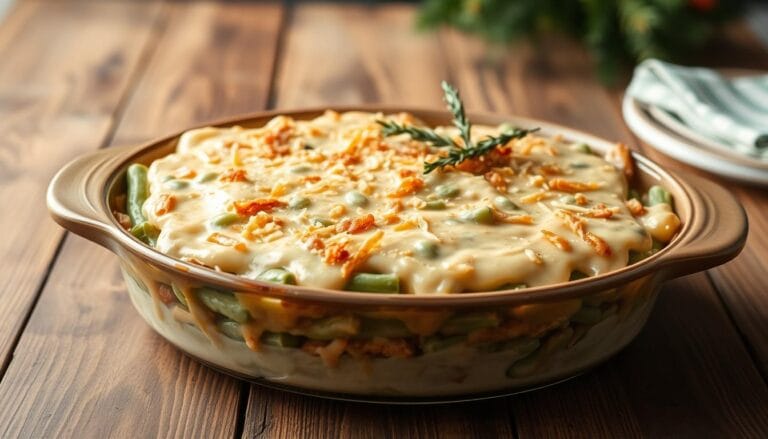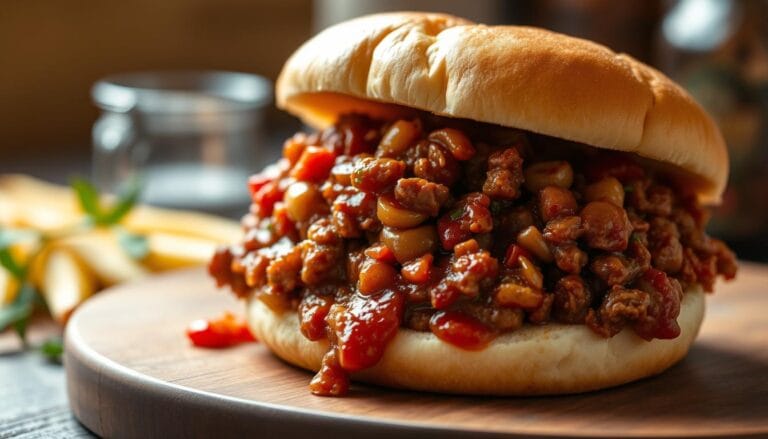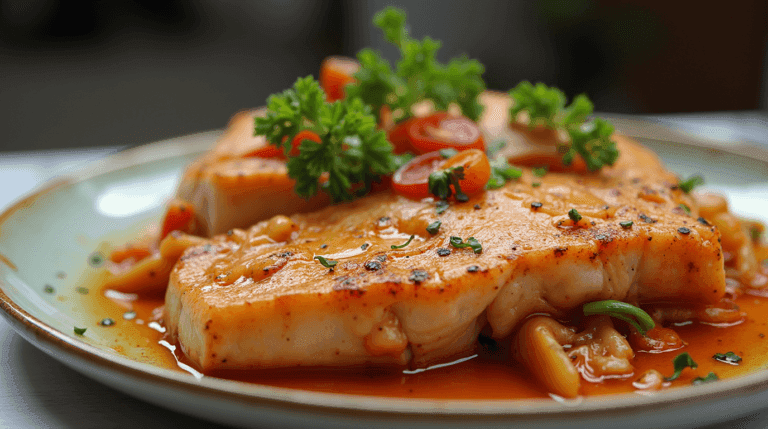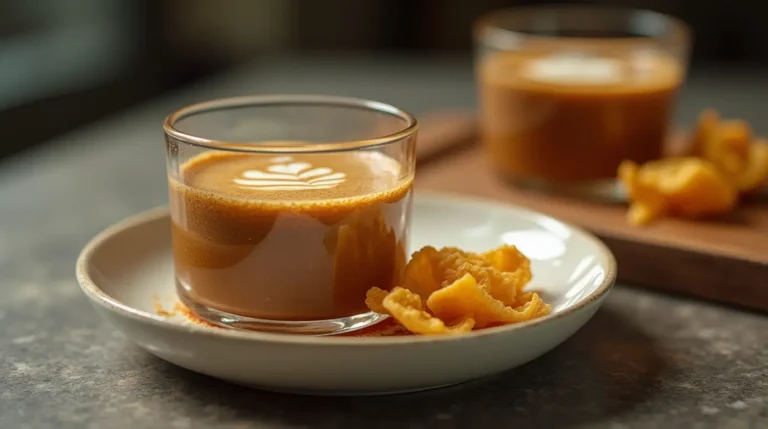Rice Paper Recipes: 10 Easy Dishes You Can Make Tonight
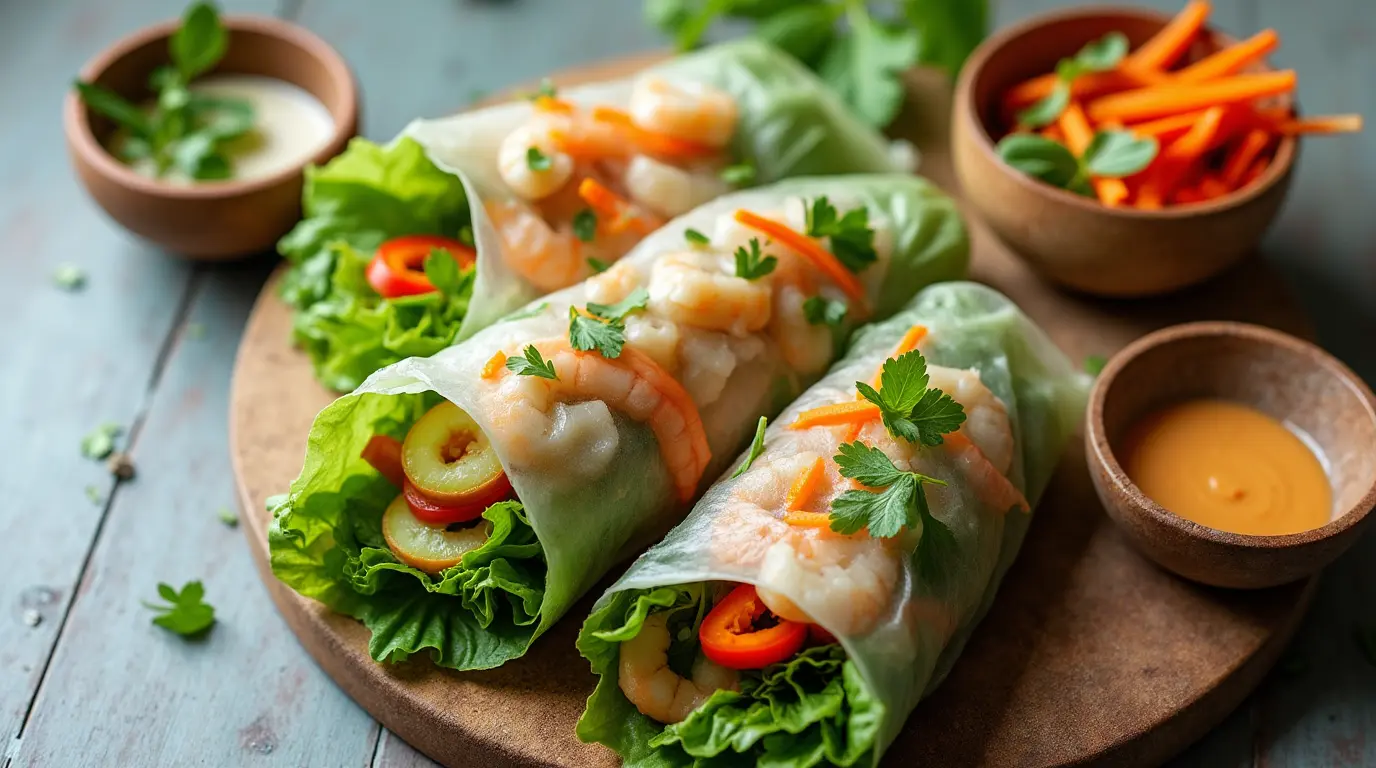
Rice paper recipes
Table of Contents
Think Again: Rice Paper is Just for Fancy Restaurant Appetizers You Could Never Make at Home?
Have you ever admired those beautiful, translucent summer rolls, packed with fresh ingredients, and thought, “That looks amazing, but way too tricky for me”? Maybe you’ve seen those delicate rice paper sheets at the store and wondered what else you could do with them besides make spring rolls. Well, get ready to be surprised! Rice paper is a secret weapon for quick, healthy, and incredibly versatile meals. Forget complicated techniques; we’re talking about simple, delicious rice paper recipes you can genuinely whip up tonight. Let’s unlock the potential of these edible wrappers together!
Overview: The Magic of Rice Paper Recipes
What makes these rice paper recipes so special? It’s their amazing ability to be both a blank canvas and a textural star. Rice paper wrappers themselves are gluten-free, low in calories, and have a neutral taste, allowing the fresh fillings to shine. When hydrated, they become soft, slightly chewy, and pliable – perfect for wrapping up vibrant ingredients. The “special sauce” here focuses on ingredient harmony – combining crunchy veggies, satisfying protein, fresh herbs, and sometimes soft noodles – all bundled neatly. We’ll also explore variations that change the texture completely!
- Time Requirement: The beauty of most rice paper recipes, especially fresh rolls, is speed! Once your fillings are prepped (which can often be done ahead), assembling takes mere minutes per roll. For 2-4 servings, expect about 15-30 minutes of active prep and assembly time, depending on the complexity of your fillings. Cooked variations might take slightly longer.
- Difficulty Level: Easy! Seriously. The main skill is learning how to handle the hydrated rice paper wrappers, which just takes a tiny bit of practice (and we’ll walk you through it!). Chopping veggies and maybe cooking some simple protein is usually the hardest part. These rice paper recipes are perfect for beginners and busy weeknights.

Essential Ingredients: Creating Harmony in Every Bite
The success of any rice paper recipe lies in the balance of its components. Think textures, colors, and flavors working together.
Here are the key players:
- Rice Paper Wrappers: The star of the show!
- Description: Thin, brittle, translucent discs made from rice flour, tapioca starch, water, and salt. They come in various sizes (round or square).
- Why They’re Important: They are the vessel holding everything together. Their slight chewiness provides a unique texture contrast to the fillings. Choosing the right size impacts how easy they are to roll. Smaller ones are easier for beginners. These wrappers are fundamental to all rice paper recipes.
- Substitutions: For the wrapper itself, there isn’t a direct sub that behaves the same way. However, you could use large lettuce leaves (like butter or romaine) for a similar fresh wrap concept, though it won’t be a traditional rice paper recipe.
- Fresh, Crunchy Vegetables: Texture and Vibrancy!
- Examples: Lettuce (butter, romaine, green leaf), carrots (julienned), cucumbers (julienned), bell peppers (thinly sliced), bean sprouts, red cabbage (shredded).
- Why They’re Important: ProviThey providential crunch, freshness, color, and nutrients. The contrast between crisp veggies and the soft wrapper is key to the classic summer roll experience. They bulk up the rolls healthily. Well-chosen veggies are crucial for balanced rice paper recipes.
- Substitutions: Radishes (thinly sliced), jicama (julienned), celery (thinly sliced), snow peas.
- Aromatic Fresh Herbs: The Flavor Pop!
- Examples: Mint, cilantro, basil (Thai basil is great!), chives, and sometimes parsley.
- Why They’re Important: Herbs add bursts of bright, fresh flavor that elevate the entire dish from bland to brilliant. Don’t skip them! They are often the defining taste in many fresh rice paper recipes.
- Substitutions: Experiment with dill, parsley, or other leafy herbs you enjoy.
- Protein Power: Making it a Meal!
- Examples: Cooked shrimp (peeled and deveined), cooked shredded chicken, baked or pan-fried tofu (firm or extra-firm, sliced), thinly sliced cooked pork, smoked salmon.
- Why They’re Important: Adds They addtance and makes the rolls more filling and satisfying. Provides essential protein. The protein choice heavily influences the final flavor profile of your rice paper recipes.
- Substitutions: Edamame (shelled), chickpeas (slightly mashed), hard-boiled eggs (sliced), tempeh (cooked and sliced).
- Optional Filler – Rice Vermicelli Noodles: Softness and Bulk!
- Examples: Thin rice noodles, often labeled “vermicelli” or “bun.”
- Why They’re Important: They add a soft texture contrast and make the rolls more substantial. They absorb flavors well. However, skipping them makes for lighter, more veggie-forward rice paper recipes.
- Substitutions: Quinoa (cooked), glass noodles (bean thread noodles), or simply omit.
- The All-Important Dipping Sauce: Flavor Central!
- Examples: Peanut sauce (peanut butter, hoisin, soy sauce, lime, water), Nuoc Cham (Vietnamese dipping sauce – fish sauce, lime juice, sugar, water, garlic, chili), sweet chili sauce, hoisin sauce, soy-ginger dip.
- Why They’re Important: The sauce ties everything together! It adds moisture and a concentrated burst of flavor (sweet, savory, tangy, spicy). The right sauce complements the fillings and completes the rice paper recipes.
- Substitutions: Get creative! Tamari-based sauces for gluten-free, almond butter instead of peanut butter, sriracha mayo, vinaigrettes.

Step-by-Step Instructions: Mastering the Rice Paper Roll (Classic Summer Roll Example)
Let’s focus on making classic fresh summer rolls, as the technique is foundational for many rice paper recipes.
- Prepare Your Fillings (Mise en Place is Key!):
- Technique: Cook your protein (shrimp, chicken, tofu) and let it cool. Cook rice vermicelli according to package directions (usually just needs soaking in hot water), rinse with cold water, and drain well. Wash and chop/slice/julienne all your vegetables and herbs. Arrange everything in separate bowls or piles on a large cutting board or platter. Prepare your dipping sauce(s) in small bowls.
- Why: Having everything ready before you start working with the delicate rice paper is crucial. It makes the assembly process smooth and fast, preventing the wrappers from drying out or getting too sticky while you fumble for ingredients. This prep work ensures consistency in your rice paper recipes.
- Tip: Cut ingredients into relatively thin, uniform shapes (like matchsticks or thin slices) so they lie flat and roll easily. Drain everything well to avoid soggy rolls.
- Set Up Your Rolling Station:
- Technique: Fill a large, shallow dish (a pie plate, large bowl, or even a clean skillet) with warm water (comfortable to the touch, not hot). Have a clean, flat work surface ready – a large cutting board or a clean, damp kitchen towel spread flat works well. Keep your prepared fillings and rice paper wrappers nearby.
- Why: The warm water hydrates the wrapper. A dedicated station keeps things organized. Some find a damp towel prevents sticking better than a cutting board, but experiment to see what you prefer. This setup is essential for efficiently making rice paper recipes.
- Tip: Don’t make the water too hot; it will make the wrappers too sticky and fragile. Warm tap water is usually perfect.
- Hydrate the Rice Paper Wrapper:
- Technique: Take one dry rice paper wrapper and slide it into the warm water. Submerge it completely for about 15-30 seconds (this varies by brand – read package directions if available). You want it to be pliable and softened but not completely limp and mushy. It should still have a little structure. It will continue to soften slightly as you fill it.
- Why: This is the most critical step. Under-soaking makes it stiff and prone to cracking. Over-soaking makes it sticky, fragile, and difficult to handle. Finding that sweet spot is key to successful rice paper recipes.
- Tip: Gently rotate it in the water to ensure even hydration. Handle it carefully as you lift it out – it can tear easily.
- Lay Out and Fill the Wrapper:
- Technique: Carefully lift the hydrated wrapper from the water, letting excess water drip off, and lay it flat on your prepared work surface. Smooth out any major wrinkles gently. Arrange your fillings on the third of the wrapper closest to you, leaving about an inch border on the sides and bottom.
- Layering for Looks (Optional): If using shrimp or pretty herbs, place them down first slightly above the main filling pile so they show through the translucent wrapper when rolled. Then, layer lettuce, noodles (if using), other veggies, protein, and herbs.
- Why: Proper placement makes rolling easier and ensures fillings are distributed evenly. Leaving a border allows you to seal the roll. Strategic layering makes for beautiful, professional-looking rice paper recipes.
- Tip: Don’t overfill! It’s tempting, but overstuffed rolls are much harder to roll tightly and more likely to tear. Start with less filling than you think you need.
- Roll it up!
- Technique:
- a. Take the bottom edge (closest to you) and fold it up snugly over the filling.
- b. Fold in the left and right sides, like an envelope or burrito. This tucks everything in neatly.
- c. Roll the whole thing upwards (away from you) tightly and evenly, keeping the sides tucked in, until you have a neat cylinder. The slightly sticky wrapper should seal itself.
- Why: Folding the bottom first secures the filling. Folding the sides prevents bits from falling out. Rolling tightly creates a compact, easy-to-eat roll and prevents it from falling apart. This technique is vital for neat and consistent rice paper recipes.
- Tip: Use gentle but firm pressure. If the wrapper tears, don’t despair! You can sometimes patch it with a small piece of another hydrated wrapper or just set it aside as the “chef’s treat” and try again. Practice makes perfect!
- Technique:
- Serve Immediately:
- Technique: Place the finished roll on a serving platter. Repeat the process with the remaining wrappers and fillings. Serve immediately with your prepared dipping sauce(s).
- Why: Fresh summer rolls are best enjoyed right away, while the wrapper is soft and the fillings are crisp. They tend to dry out or get sticky if they sit too long. Quick serving preserves the ideal texture of these rice paper recipes.

Assembly: Beyond the Basic Roll
While summer rolls are iconic, the assembly process can be adapted for different rice paper recipes:
- Building Different Shapes:
- Dumplings/Parcels: Place filling in the center, fold in sides, then fold the top and bottom towards the middle, creating a square or rectangle. These can sometimes be pan-fried or steamed.
- Crispy Rolls: Roll tightly like summer rolls, ensuring no air pockets. These are then typically fried or baked.
- “Pizza”: Lay a hydrated (or sometimes dry, depending on the method) wrapper flat, top with ingredients, and bake or pan-fry until crispy.
- “Tacos”: Hydrate a wrapper, lay it flat, place fillings on one half, and simply fold it over like a soft taco.
- Presentation Tips:
- Cutting: For serving, you can cut summer rolls in half diagonally with a sharp, wet knife to showcase the colorful fillings.
- Arrangement: Arrange rolls neatly on a platter, perhaps lined with lettuce leaves. Don’t overcrowd them, as they can stick together.
- Sauce: Serve dipping sauce in small individual bowls or a larger shared bowl. Garnish the sauce with chopped peanuts, chili flakes, or cilantro. A good presentation enhances the appeal of your rice paper recipes.
Storage and Make-Ahead Tips: Keeping it Fresh
Fresh rice paper recipes like summer rolls are notoriously tricky to store perfectly, as the wrappers tend to dry out or become tough/sticky.
- Best Practice: Eat Fresh! Seriously, they are best made and eaten within an hour or two.
- Short-Term Storage (If Necessary):
- Place finished rolls on a plate or container without them touching each other. If they touch, they will likely stick irreversibly.
- Cover the plate tightly with plastic wrap, or cover each roll individually (but loosely) in plastic wrap. Some people have success placing a very slightly damp paper towel over the rolls before covering them with plastic wrap.
- Store in the refrigerator for a few hours only. The wrapper texture will likely degrade. These storage methods are compromises for delicate rice paper recipes.
- Make-Ahead Components: The best strategy for meal prep is to prepare all the fillings (cooked protein, chopped veggies, cooked noodles, sauce) ahead of time. Store them in separate airtight containers in the refrigerator for 2-3 days. When ready to eat, simply hydrate the wrappers and assemble the rolls fresh. This maintains the best quality for your rice paper recipes.
- Reheating: Fresh summer rolls cannot be reheated. Crispy fried or baked rice paper recipes can sometimes be reheated in an oven or air fryer to regain some crispiness, but they are still best fresh.

10 Easy Rice Paper Recipe Variations: Get Creative!
Ready to move beyond the classic? Rice paper is incredibly versatile! Here are 10 ideas:
- Classic Vietnamese Summer Rolls (Gỏi Cuốn): The standard bearer. Shrimp or pork, vermicelli, lettuce, mint, and cilantro. Served with peanut sauce or nuoc cham. This is the foundational rice paper recipe.
- Crispy Fried or Baked Spring Rolls: Fill with ground meat, shredded veggies (cabbage, carrot), glass noodles, mushror ooms. Roll tightly and fry until golden brown or bake at high heat (brush with oil) for a healthier crunch. A satisfying textural shift in rice paper recipes.
- Rice Paper “Pizza”: A trendy street food! Lay a wrapper (sometimes dry, sometimes quickly dipped) in a lightly oiled pan or on a baking sheet. Top with egg, green onions, cheese, cooked meat, Sriracha, etc. Cook until crispy. A fun, fast fusion rice paper recipe.
- Pan-Fried Rice Paper Dumplings: Fill hydrated wrappers with savory fillings (like pork and chive or mushroom and tofu). Fold into squares or half-moons. Pan-fry in a little oil until golden and slightly chewy/crispy. These offer a unique texture among rice paper recipes.
- Quick Rice Paper Tacos/Wraps: Hydrate a wrapper, fill with your favorite taco fillings (seasoned ground meat, lettuce, cheese, salsa) or wrap fillings (tuna salad, chicken salad, hummus and veggies), and just fold in half. No complex rolling is needed for these simple rice paper recipes.
- Fresh Fruit Dessert Rolls: Fill hydrated wrappers with thin slices of fresh fruit (mango, strawberries, kiwi, banana), mint leaves, and maybe some shredded coconut or a drizzle of honey/maple syrup. Serve with a yogurt dip or chocolate sauce. A light and healthy twist on rice paper recipes.
- Breakfast Scramble Wraps: Fill hydrated wrappers with scrambled eggs, cheese, chopped bacon or sausage, and maybe some spinach or avocado. Eat immediately for a quick, gluten-free breakfast alternative, showcasing the morning potential of rice paper recipes.
- Avocado and Veggie Power Rolls: Focus on healthy fats and greens. Fill it with slices of avocado, cucumber, carrots, bell peppers, spinach or arugula, and maybe some sprouts or sunflower seeds. A nutrient-dense rice paper recipe.
- Smoked Salmon and Cream Cheese Rolls: A brunch-inspired delight! Fill with smoked salmon, a smear of cream cheese (or dairy-free alternative), fresh dill, capers, and thinly sliced red onion or cucumber. Elegant and easy rice paper recipes like this are great for entertaining.
- Leftover Remix Rolls: Don’t know what to do with last night’s leftover roasted chicken, grilled veggies, or stir-fry? Chop them up, add some fresh herbs or lettuce, and roll them into a rice paper wrapper! A fantastic way to repurpose meals into new rice paper recipes.
Conclusion: Roll With It and Have Fun!
As you can see, rice paper wrappers are far more than just a one-trick pony. They open the door to countless quick, healthy, and delicious meals and snacks. From classic fresh rolls bursting with herbs to crispy fried delights and even inventive pizzas and tacos, there’s a world of possibilities waiting in those simple translucent sheets. The key is fresh ingredients, balanced flavors and textures, and a little practice with the rolling technique. Don’t be intimidated! Embrace the versatility, experiment with fillings and sauces, and enjoy creating your amazing rice paper recipes. Happy rolling!
FAQs: Your Rice Paper Questions Answered
Q1: My rice paper wrappers keep tearing when I roll them. What am I doing wrong?
A1: Tearing is common at first! Reasons include: ove-soaking the wrapper (making it too fragile), using water that’s too hot, overfilling the roll, or pulling too hard while rolling. Try soaking for slightly less time in warm (not hot) water, using slightly less filling, and being gentle but firm when rolling. Practice helps perfect handling for rice paper recipes.
Q2: Why are my finished rolls sticking together on the plate?
A2: The hydrated wrappers are naturally sticky! To prevent sticking, don’t let finished rolls touch each other on the serving plate. You can line the plate with lettuce leaves or lightly brush the rolls with oil (though this adds fat). Storing them individually wrapped in plastic wrap also helps if not serving immediately, but freshness is key for the best texture in rice paper recipes.
Q3: Are rice paper recipes healthy?
A3: They certainly can be! The wrappers themselves are low in fat and calories and gluten-free. The overall healthiness depends entirely on the fillings and dipping sauce. Filling them with lots of fresh vegetables, lean protein, and herbs makes for very healthy rice paper recipes. Be mindful of sauces, as some (like creamy peanut sauce or sugary sweet chili sauce) can add significant calories, fat, or sugar.
Q4: What’s the difference between rice paper wrappers and spring roll wrappers (egg roll wrappers)?
A4: They are very different! Rice paper wrappers (used for fresh summer rolls or Vietnamese fried rolls) are thin, brittle discs made from rice/tapioca that become soft and translucent when dipped in water. Spring roll/egg roll wrappers (often found in the refrigerated or frozen section) are typically made from wheat flour and eggs, are thicker, opaque, and doughy, and are almost always meant to be fried or baked until crispy. Don’t substitute one for the other in rice paper recipes.
Q5: Can I prepare the components for rice paper recipes in advance?
A5: Yes! This is the best way to make weeknight assembly super fast. Cook your protein, cook noodles, chop all veggies and herbs, and mix your dipping sauce. Store everything in separate airtight containers in the fridge (up to 2-3 days). When you’re ready to eat, just hydrate the wrappers and assemble your fresh rice paper recipes in minutes!
Source Links
Vietnamese Rice Paper Rolls – RecipeTin Eats
- Source: www.recipetineats.com, Published: 2020-04-28
- Description: This recipe features fresh Vietnamese rice paper rolls with a peanut dipping sauce, emphasizing ease with step-by-step photos and video. It’s a foundational citation for classic, quick rolls with shrimp, vermicelli, and herbs—perfect for a beginner-friendly dish. Nagi’s “cheeky tricks” make it ideal for tonight’s meal.
10 Easy Rice Paper Recipes You Need To Try – Insanely Good
- Source: insanelygoodrecipes.com, Published: 2022-05-30
- Description: This compilation includes 10 recipes, like shrimp summer rolls, vegetable rolls, and crispy rice paper chips. It’s a direct match for your request, offering diverse, easy options with tips like doubling rice papers for sturdiness—great for quick assembly tonight.
21 Must-Try Rice Paper Recipes (Rolls and More…) – My Pure Plants
- Source: mypureplants.com, Published: 2023-05-24
- Description: This source provides creative recipes such as apple pie spring rolls and crispy rice paper samosas, all simple enough for a weeknight. It’s cited for its variety and adaptability, with options like baking or frying that can be done quickly.
15+ Tasty Rice Paper Recipes (Rolls and Beyond!) – The Nessy Kitchen
- Source: thenessykitchen.com, Published: 2022-07-20
- Description: Featuring recipes like traditional Gỏi Cuốn and innovative uses like rice paper pizza, this source is key for its straightforward instructions and gluten-free options. It’s perfect for quick, creative dishes tonight.
Rice Paper Dumplings – Cooking With Ayeh
- Source: cookingwithayeh.com, Published: 2023-03-06
- Description: This recipe for crispy rice paper dumplings with a flavorful filling (e.g., teriyaki tofu) is cited for its simplicity and fast cooking methods (pan-fry or air-fry). It’s an easy, satisfying dish for a last-minute dinner.
Crispy Rice Paper Dumplings (Gluten-Free, Easy) – I Heart Umami
- Source: iheartumami.com, Published: 2021-12-06
- Description: Another take on rice paper dumplings, this gluten-free recipe uses a quick veggie filling and pan-frying technique. It’s included for its ease and speed, making it a viable option for tonight.
Veggie Rice Paper Rolls Recipe with Peanut Sauce – Little Broken
- Source: www.littlebroken.com, Published: 2019-03-22
- Description: This citation offers a vegetable-focused roll with a spicy-sweet peanut sauce, complete with prep-ahead tips. It’s a quick, healthy choice for a light dinner tonight.
7 Rice Paper Recipes That’ll Make Any Meal Better – Serious Eats
- Source: www.seriouseats.com, Published: 2024-04-25
- Description: Featuring recipes like grilled Vietnamese rice paper rolls with pork paste, this source is cited for its slightly more advanced yet still accessible options. It’s great for adding variety to a quick meal plan.
Rice Paper Recipes – Drizzle Me Skinny!
- Source: drizzlemeskinny.com, Published: 2023-07-09
- Description: This includes high-protein options like chicken rolls and creative dishes like firecracker salmon rolls. It’s a key citation for nutritious, easy recipes that can be whipped up tonight.
Crispy Rice Paper Spring Rolls (3 Ways) – My Pure Plants
- Source: mypureplants.com, Published: 2024-09-01
- Description: Offering three filling options (veggie, tofu, etc.) with baking, frying, or air-frying methods, this is cited for its flexibility and crispy results—perfect for a fast, customizable dinner.
Source Links
- Loaded Potato Casserole Recipe Kim J: How to Make It Perfect https://ghitarecipes.com/loaded-potato-casserole-recipe-kim-j/
- Chicken Dressing Recipe: How to Elevate Your Holiday Meal https://ghitarecipes.com/chicken-dressing-recipe/
- Best Tofu Marinade Chicken Recipes: How to Make Them Tasty https://ghitarecipes.com/best-tofu-marinade-chicken-recipes/
- Baked Chicken Cutlet Recipes: How to Make Them Crispy https://ghitarecipes.com/best-tofu-marinade-chicken-recipes/
- Spark Recipes Chicken Taco Soup: How to Make It Flavorful https://ghitarecipes.com/spark-recipes-chicken-taco-soup/
- Diabetic Recipe for Crock Pot Soup with Chicken: How to Serve It https://ghitarecipes.com/diabetic-recipe-for-crock-pot-soup-with-chicken/
- Famous Recipe Chicken Near Me: How to Find the Best Spots https://ghitarecipes.com/famous-recipe-chicken-near-me/
- How to Make the Best Diabetic Crockpot Recipes Gnocchi and Chicken in 5 Steps https://ghitarecipes.com/diabetic-crockpot-recipes-gnocchi-and-chicken-2/
- How to Make the Best Chicken Philly Cheesesteak Recipe in 5 Steps https://ghitarecipes.com/chicken-philly-cheesesteak-recipe/
- Chicken and Cheese Jalousie Recipe: 5 Easy Steps to Make https://ghitarecipes.com/chicken-and-cheese-jalousie-recipe/
- How to Make the Best Chick Fil A Kale Salad Recipe in 5 Steps https://ghitarecipes.com/chick-fil-a-kale-salad-recipe/
- 7 Best Blackstone Chicken Recipes You Need to Try This Season https://ghitarecipes.com/blackstone-chicken-recipes/
- 7 Secrets Behind the Perfect Ground Chicken Mexican Corn Recipe https://ghitarecipes.com/ground-chicken-mexican-corn-recipe-2/
- Why This 3-Ingredient Recipe for Pasta Fazool Made with Chicken Is a Game Changer https://ghitarecipes.com/pasta-fazool-made-with-chicken/
- Braised Chicken in the Oven with Crispy Skin Recipe: 7 Flavor Boosters https://ghitarecipes.com/braised-chicken-in-the-oven-with-crispy-skin/
- Best 7 Ways to Use Chicken_and_cheese_filling in Your Dishes https://ghitarecipes.com/chicken-and-cheese-filling/
- Chicken and Gravy Recipe: How to Make It in 30 Minutes https://ghitarecipes.com/chicken-and-gravy-recipe/


